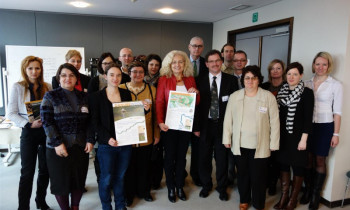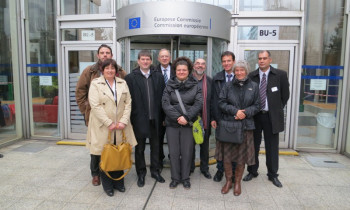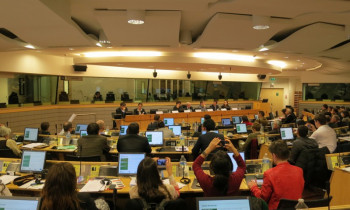DANUBEPARKS presented itself to Members of the European Parliament and staff from the Commission’s DGs Environment and Regional Policy, and participated at the Green Mountain Final Conference the next day. Our conclusion: Many of our ideas for future projects fit perfectly to currently on-going EU initiatives!
At the European Parliament, the main discussion topic was how to integrate ecology in the current situation, where economic growth and creation of jobs are on top of the agenda. Cooperation options were highlighted, and the ideas for projects on ecological connectivity along the Danube River presented. The meeting, hosted by Karin Kadenbach MEP, brought together regional representatives and MEPs from Germany, Austria, and Bulgaria with Protected Area representatives from all EU Danube countries.
Green Infrastructure was the dominant theme for the DANUBEPARKS group visiting the European Commission at the same time. Representatives from DG Regio and DG Environment presented their ideas of Green Infrastructure in Europe and future implementation of the EU Strategy for the Danube Region. DANUBEPARKS explained the WildIsland idea that could serve as a starting point for a Danube-wide Green Infrastructure project. Furthermore, ideas for funding those projects were exchanged and cooperation options investigated.
The reason for going to Brussels with the whole project team in the first place was the Final Conference of the Green Mountain project, with which we cooperate in the frame of the capitalization process started by the ETC-SEE programme. We had the chance to do – for the first time ever – a presentation of the cooperation within DANUBEPARKS by the whole team together. The example of the White-tailed Eagle winter census served well for this purpose. The conference programme once again gave some additional insights into Green Infrastructure plans of the EU, including the perspectives of macro-regions and Protected Area Networks on this concept.
We used the chance also to learn more about how other organizations do work on EU policy. For this, we invited the communications officer and the EU policy officer for biodiversity, water and soil from the EEB (European Environmental Bureau) for half a day. They gave us an insight into the decision-making processes, advocacy work, and cooperation with other organizations on EU level. With this information, we were prepared for the rest of the programme - and gained some ideas for future work on policy level.



